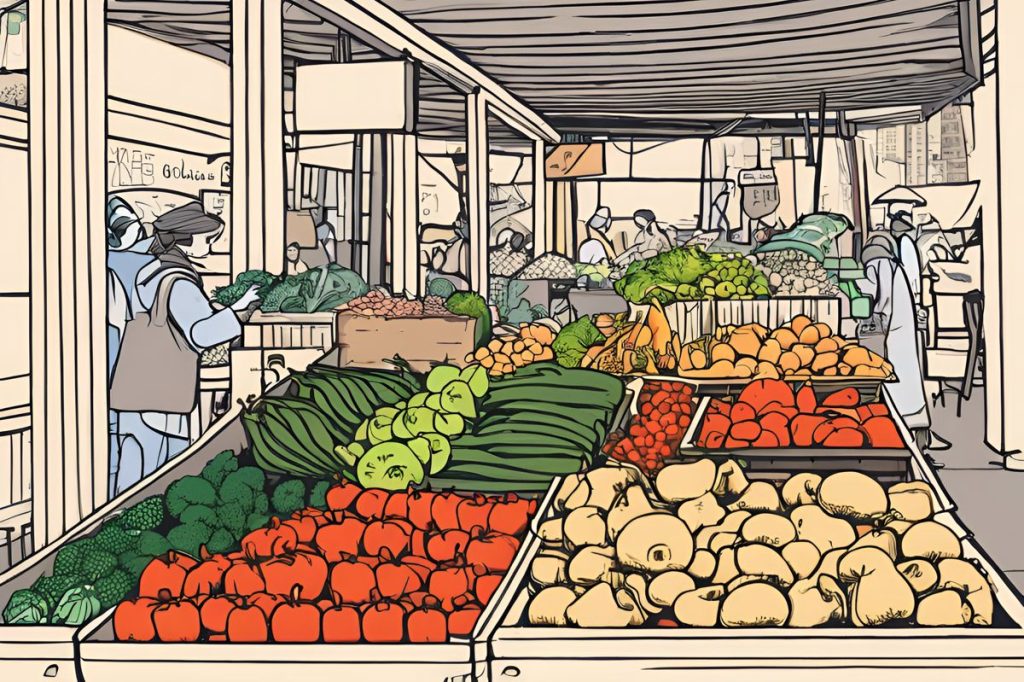In August, Cyprus saw its overall inflation dip to 1.5%, yet food prices skyrocketed, especially vegetables and greens, which surged by 41.7%. This contrast highlights a turbulent economic landscape, with falling oil and electricity costs battling against the relentless rise of agricultural product prices.
What is the trend of inflation and food prices in Cyprus for August?
In August, Cyprus experienced a deceleration in overall inflation to 1.5%, yet food prices, especially for vegetables and greens, surged by 41.7%. Key factors contributing to the inflation slowdown included a 1.24% drop in oil prices and a 0.6% decrease in electricity costs, while food costs rose due to higher agricultural product prices.
The Dynamics of Inflation in August
The seesaw battle of inflation rates continues, with Cyprus’ latest figures showing a fascinating economic landscape. In August, the consumer tide saw a mix of ebbing and flowing prices. The Cyprus Consumers Association’s report indicates a noteworthy trend: while overall inflation has slowed down, food prices, particularly vegetables and greens, have surged dramatically by 41.7%, outpacing 18 other categories of goods that experienced price increases.
This hike in food prices stands in contrast to the overall inflation rate, which saw a deceleration to 1.5% for August. This is a continuation of the trend from the previous months, with inflation rates falling from 2.1% in July and 2.7% in June. Key contributors to this easing of inflation included a 1.24% drop in oil prices and a 0.6% decrease in electricity costs.
Persistent Rise in Food Costs
Despite the general inflation slowdown, the food sector tells a different story, with a year-on-year inflation rate of 2.38% for the period from January to August 2024. This upswing has been largely propelled by the cost of agricultural products, which not only saw a 4.5% monthly increase but also a significant 6.8% rise from the previous year’s figures. A snapshot of August reveals that fresh meat prices went up by 4.1%, a 2.6% increase from the last year, and LPG cylinders experienced a 3.3% hike. Vegetable cooking fat and instant coffee prices also saw modest rises, with the former increasing by 2.4%.
On the flip side, some categories defied the uptrend. Frozen molluscs and shellfish prices saw the most substantial reduction, plummeting by 11.2%. Fresh fish and molluscs weren’t far behind with a 4.8% decrease. Infant milk, laundry detergents, eggs, and oil are other notable mentions that experienced price decreases, although some still remain higher than their costs in August of the previous year.
Supermarkets and Savings Under Scrutiny
The price dynamics extend to the aisles of supermarkets in Nicosia, where a comparison reveals a tangible difference in the cost of consumer baskets. The most striking finding was the €10.36 gap between the most expensive and the least expensive baskets, which underscores the variability in everyday consumer spending. In addition, the government’s introduction of a zero VAT rate on select essential products has provided some relief, saving consumers between €7.20 and €7.40 on a typical €95 purchase.
The effectiveness of the zero VAT measure has been under the association’s watchful eye, with a September audit showcasing its successful implementation. The prices for vital goods such as milk, sugar, and baby diapers have remained consistent since the VAT cut was introduced, thereby exerting a stabilizing effect on roughly 65% of product prices amid market pressures.
Consumer Response and Price Fluctuations
Consumers have been navigating these price changes with varying degrees of impact. The rising cost of essential food items poses a particular challenge, especially against the backdrop of an overall easing inflation rate. The ongoing scenario emphasizes the complex nature of market forces and highlights the need for vigilant monitoring by consumer associations and regulatory bodies.
It’s essential to understand that inflation is a multifaceted issue influenced by global and local economic conditions. Factors such as oil price fluctuations, agricultural yield, and policy decisions like tax rates all play a part in shaping the cost of living. The mixed trends seen in Cyprus reflect these complexities and the delicate balance required to maintain economic stability while ensuring that the needs of consumers are met.
“`markdown
What is the trend of inflation and food prices in Cyprus for August?
In August, Cyprus experienced a deceleration in overall inflation to 1.5%, yet food prices, especially for vegetables and greens, surged by 41.7%. Key factors contributing to the inflation slowdown included a 1.24% drop in oil prices and a 0.6% decrease in electricity costs, while food costs rose due to higher agricultural product prices.
How significant was the increase in food prices compared to overall inflation?
The increase in food prices, particularly vegetables and greens, at 41.7%, significantly outpaced the overall inflation rate of 1.5% for August. This contrasted with the previous months, where inflation rates were 2.1% in July and 2.7% in June. The divergence highlights the unique pressures faced by the food sector amidst a general easing of inflation.
What measures have been taken to address rising food costs in Cyprus?
The government has introduced a zero VAT rate on select essential products, which has provided some relief to consumers. This measure has resulted in savings of approximately €7.20 to €7.40 on a typical €95 purchase. An audit conducted in September indicated that the effectiveness of this measure has been successful, as prices for vital goods like milk and baby diapers have remained stable since the VAT cut.
How are consumers responding to the fluctuating prices in Cyprus?
Consumers are navigating the rising costs of essential food items with varying degrees of impact. The overall easing inflation rate contrasts sharply with the persistent rise in food prices, creating challenges for households. This situation underscores the importance of vigilant monitoring by consumer associations and regulatory bodies, as the complexities of inflation are influenced by various global and local economic factors.
“`

